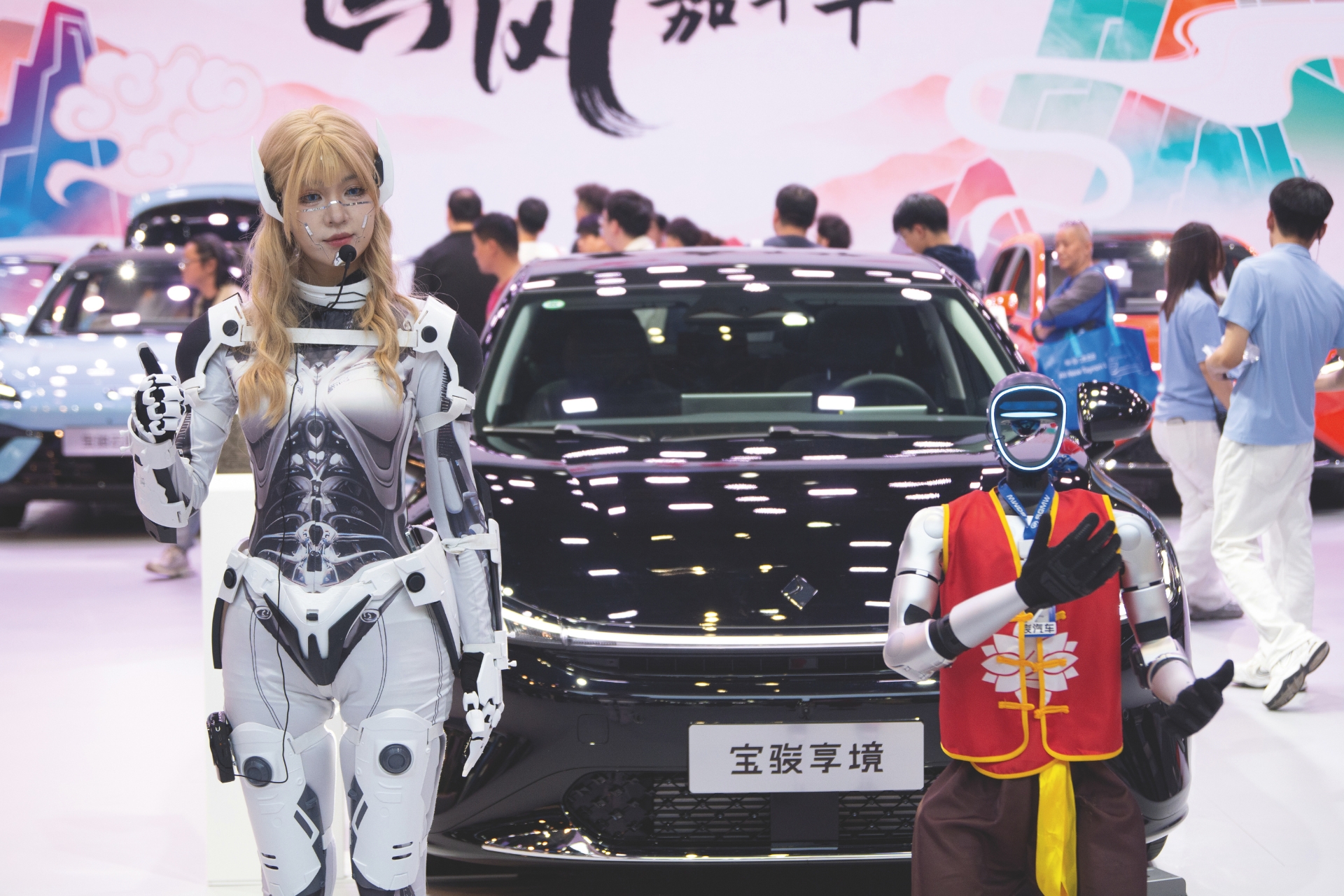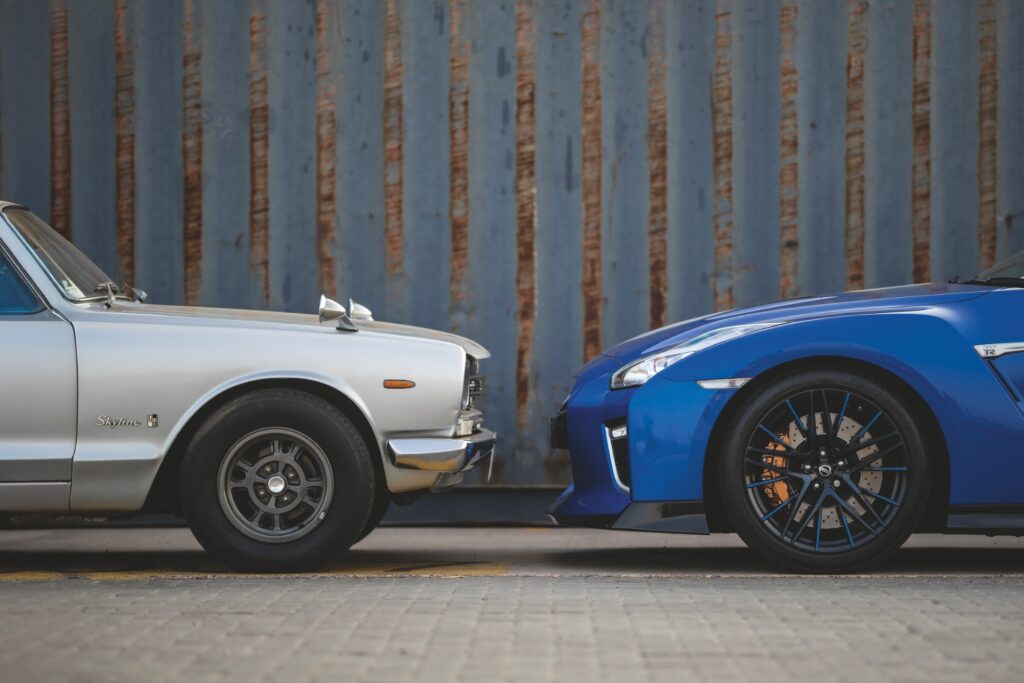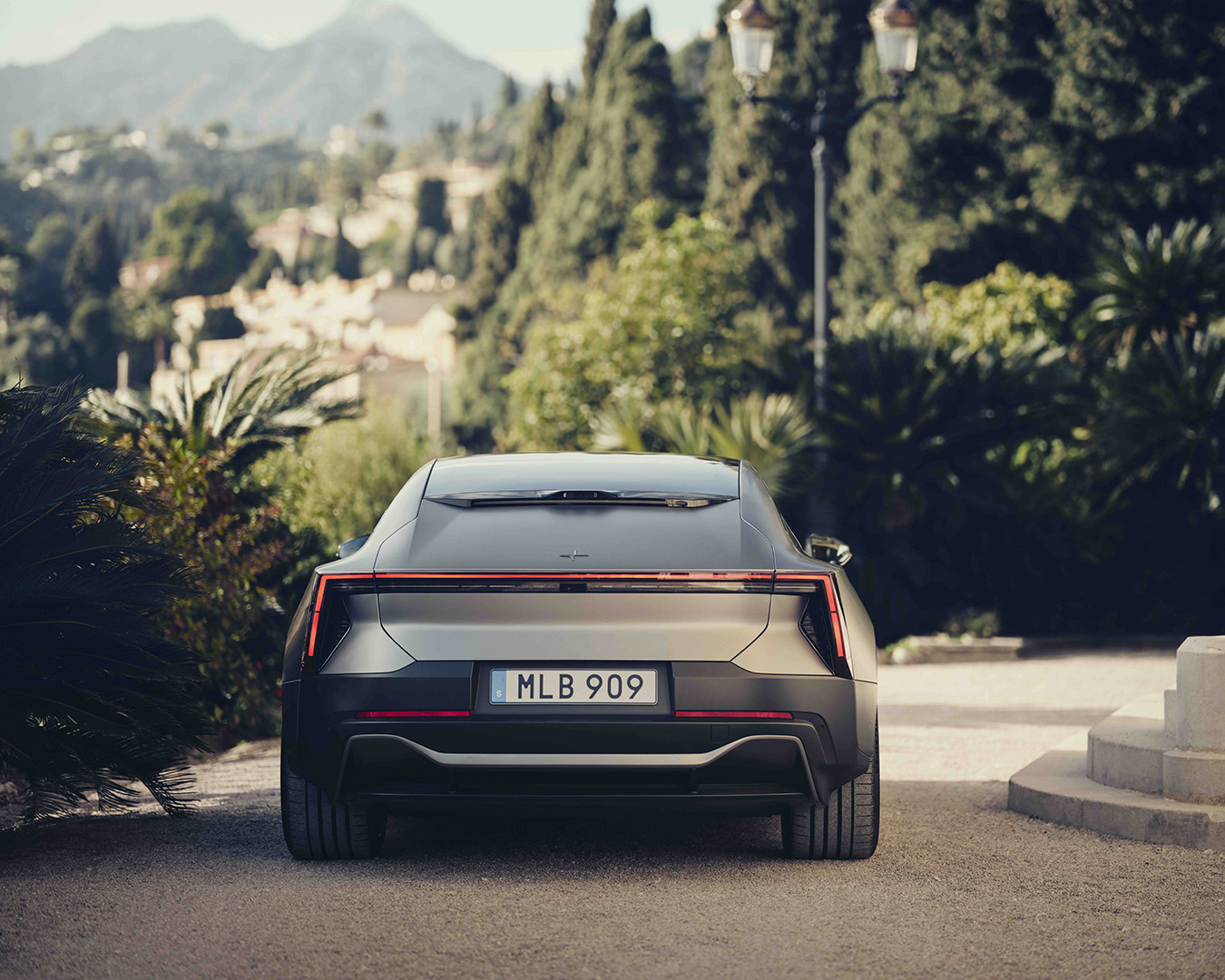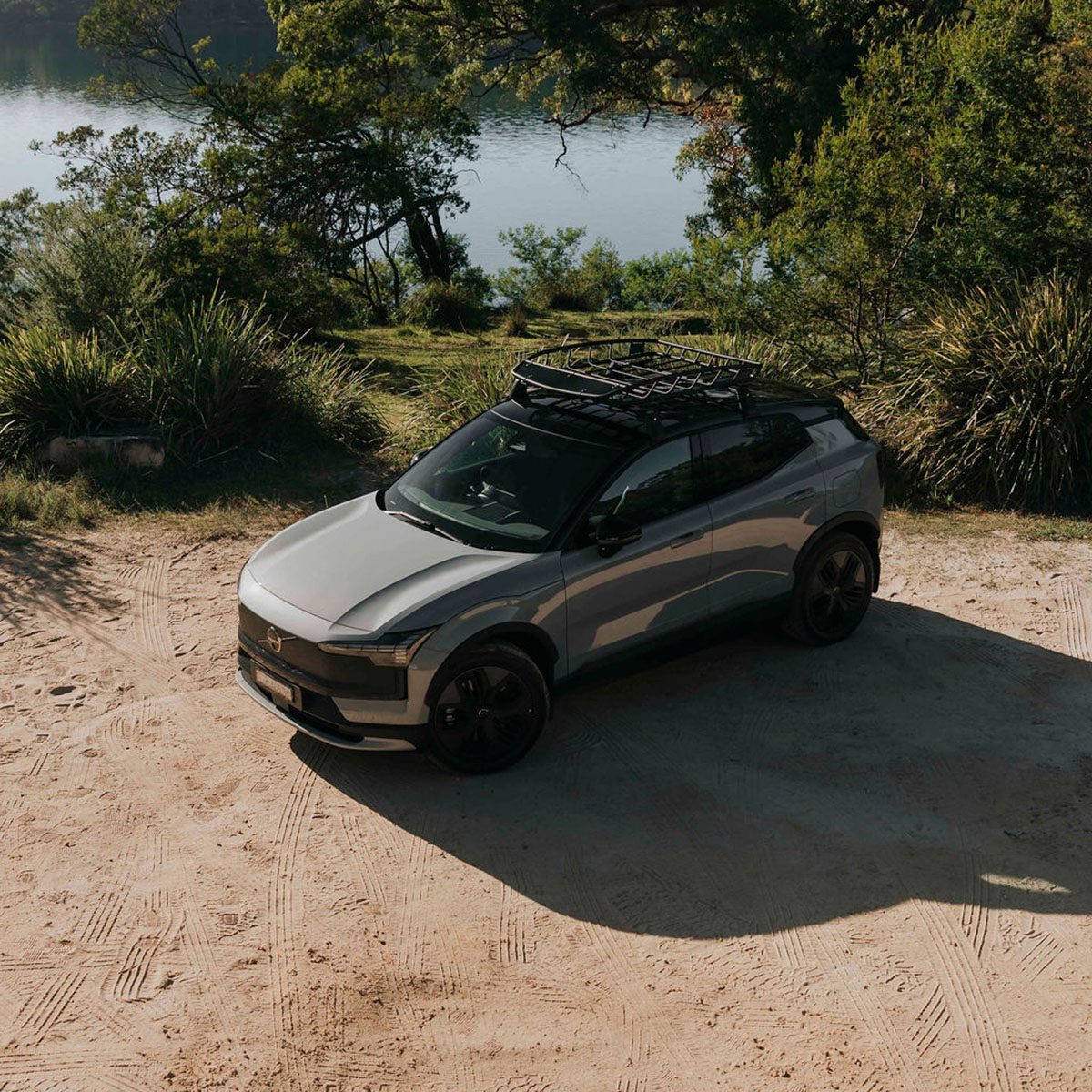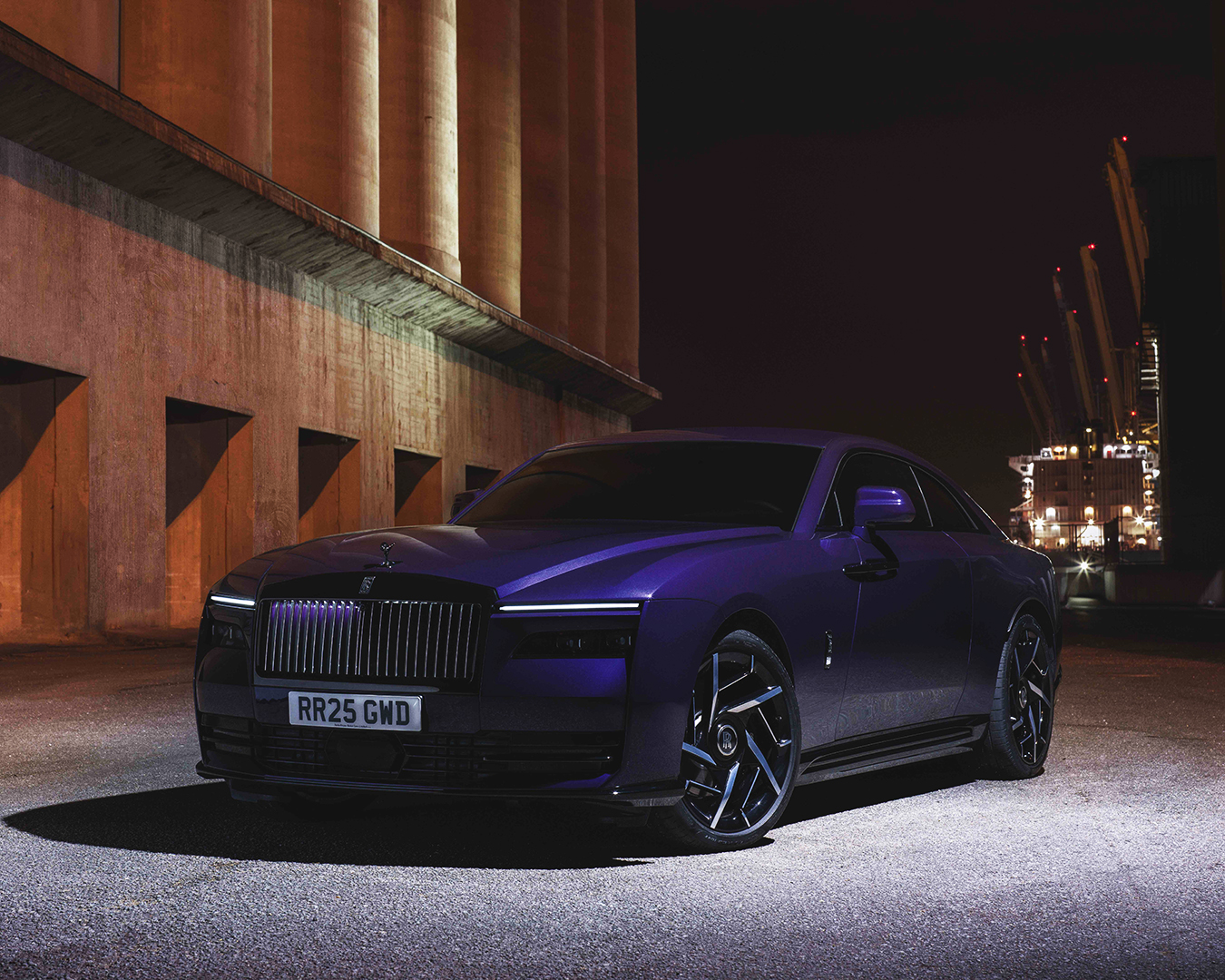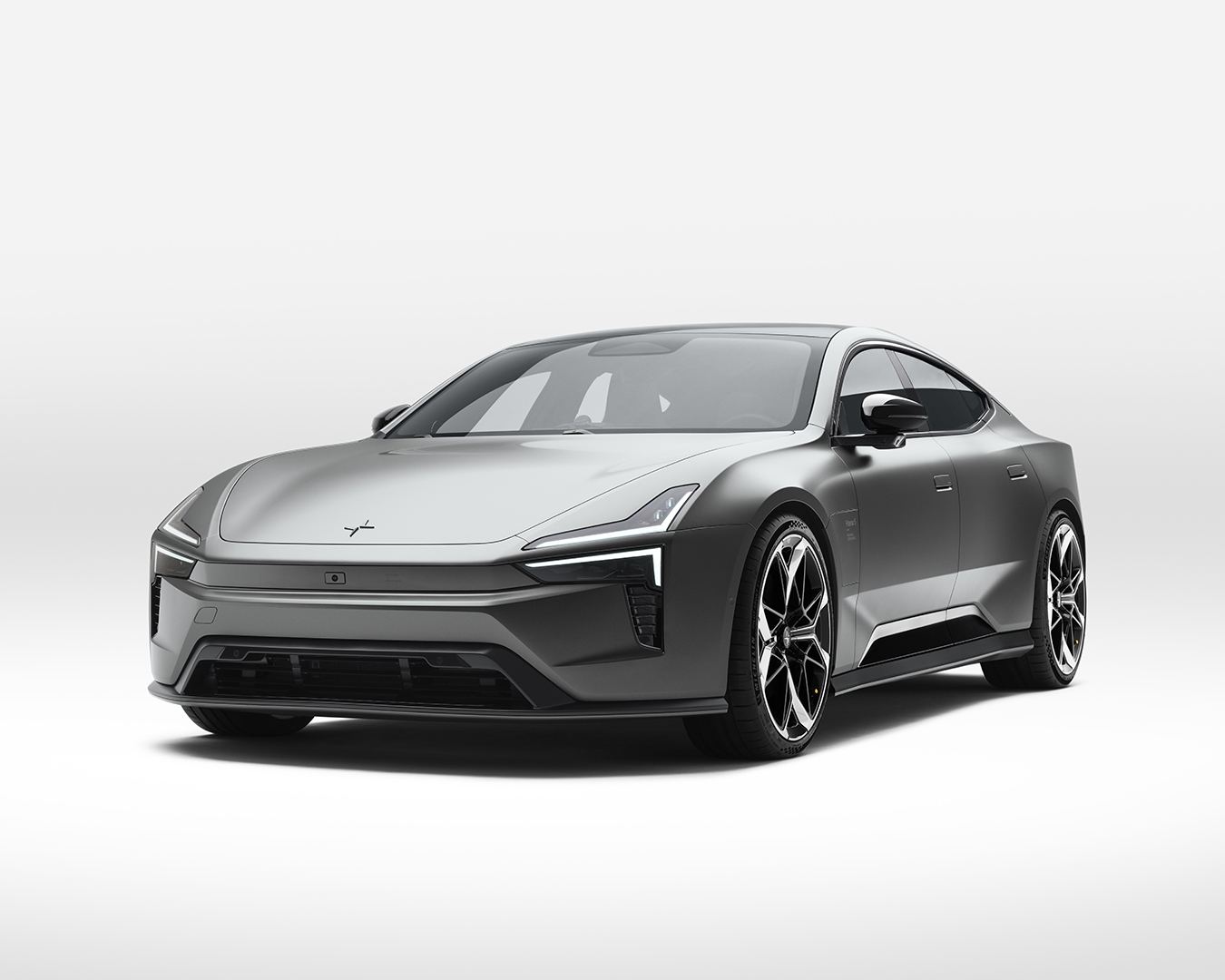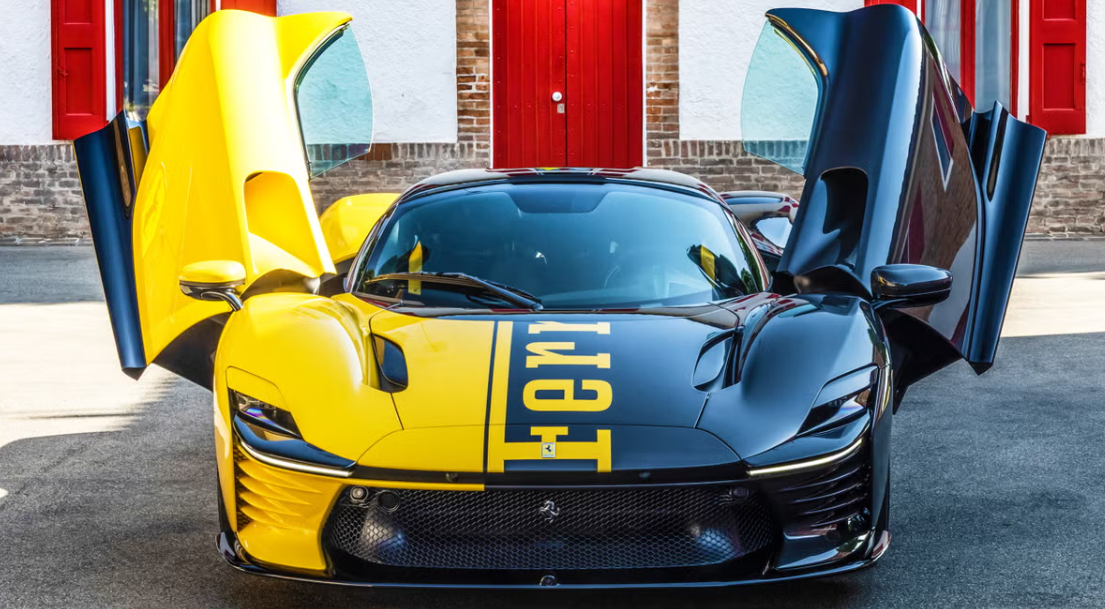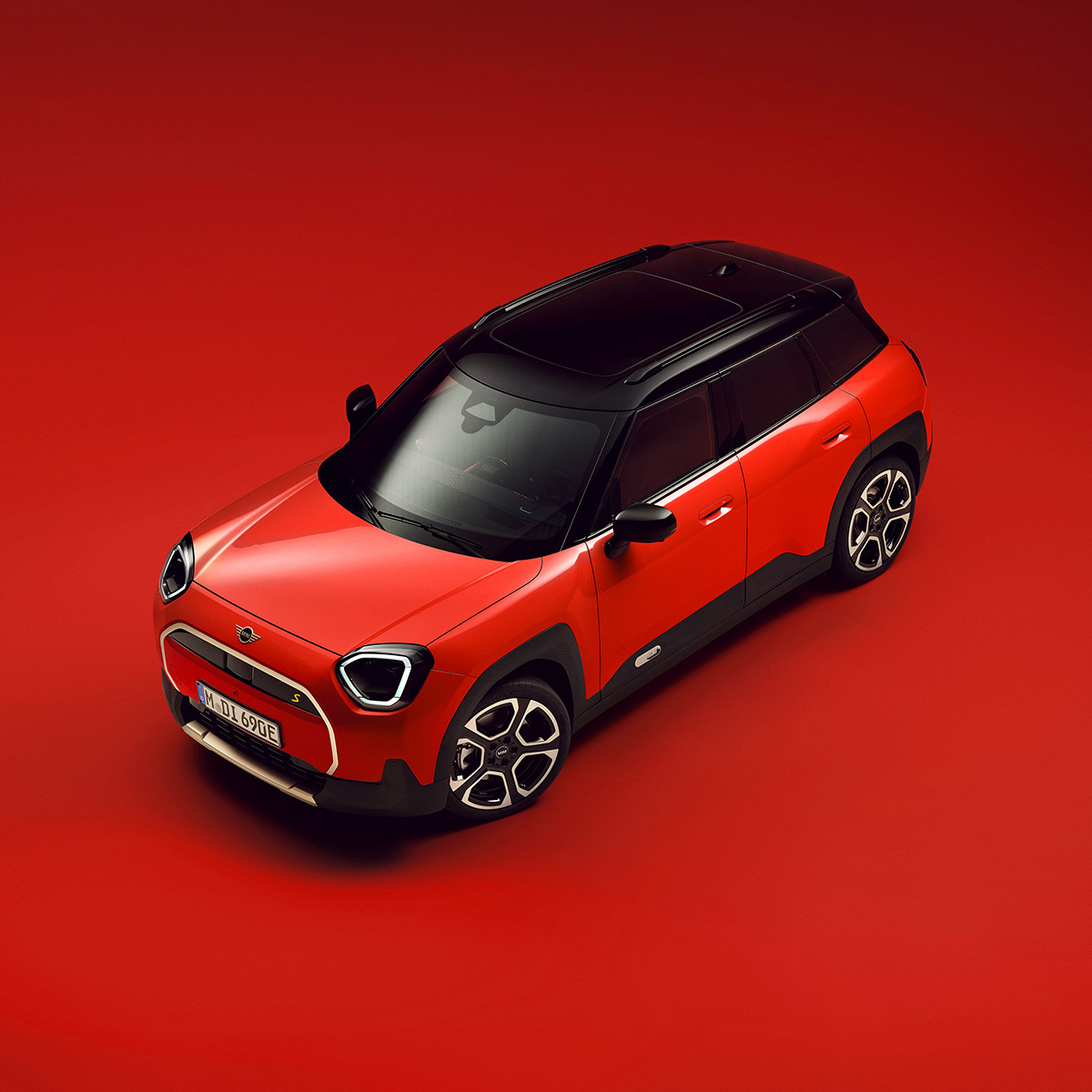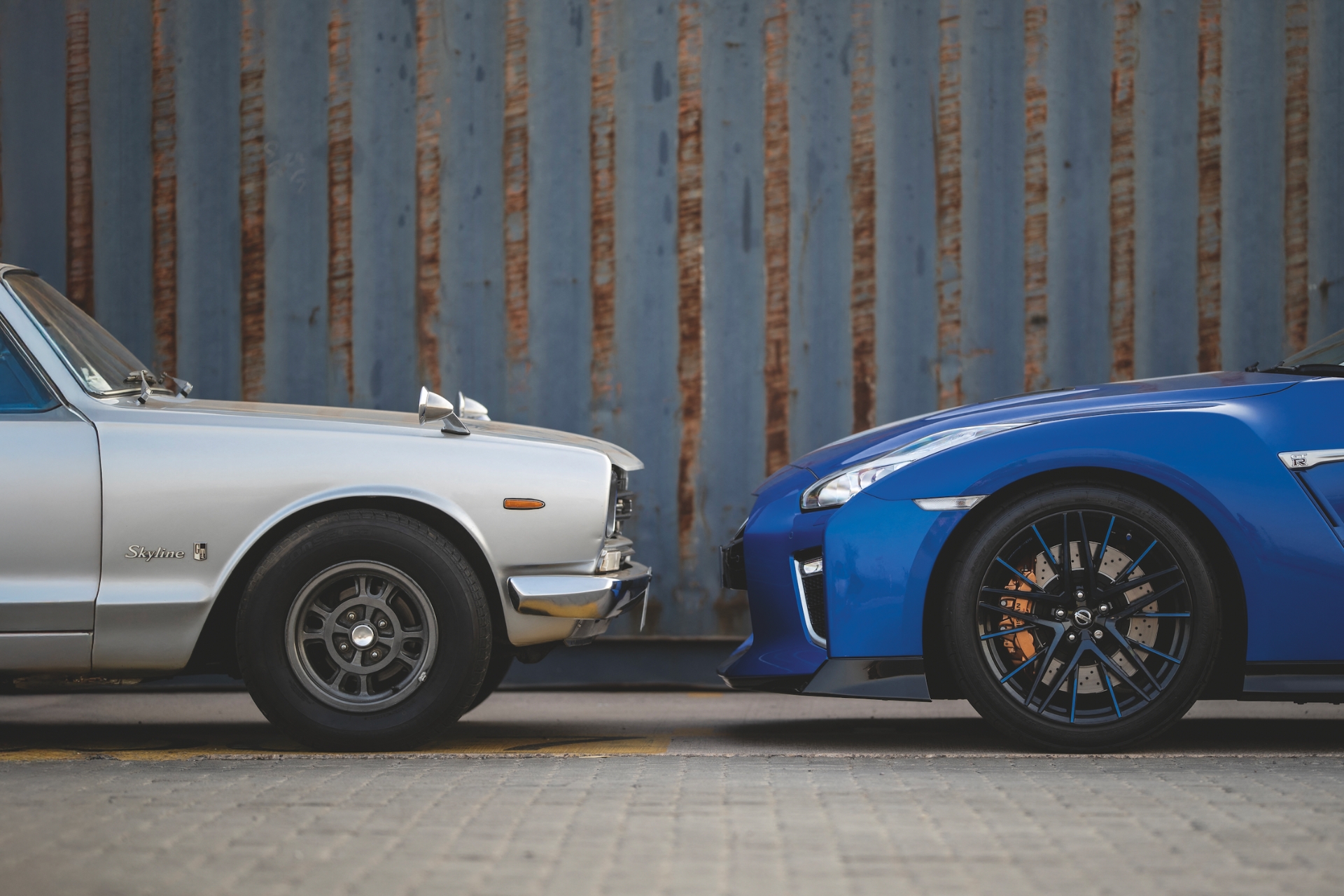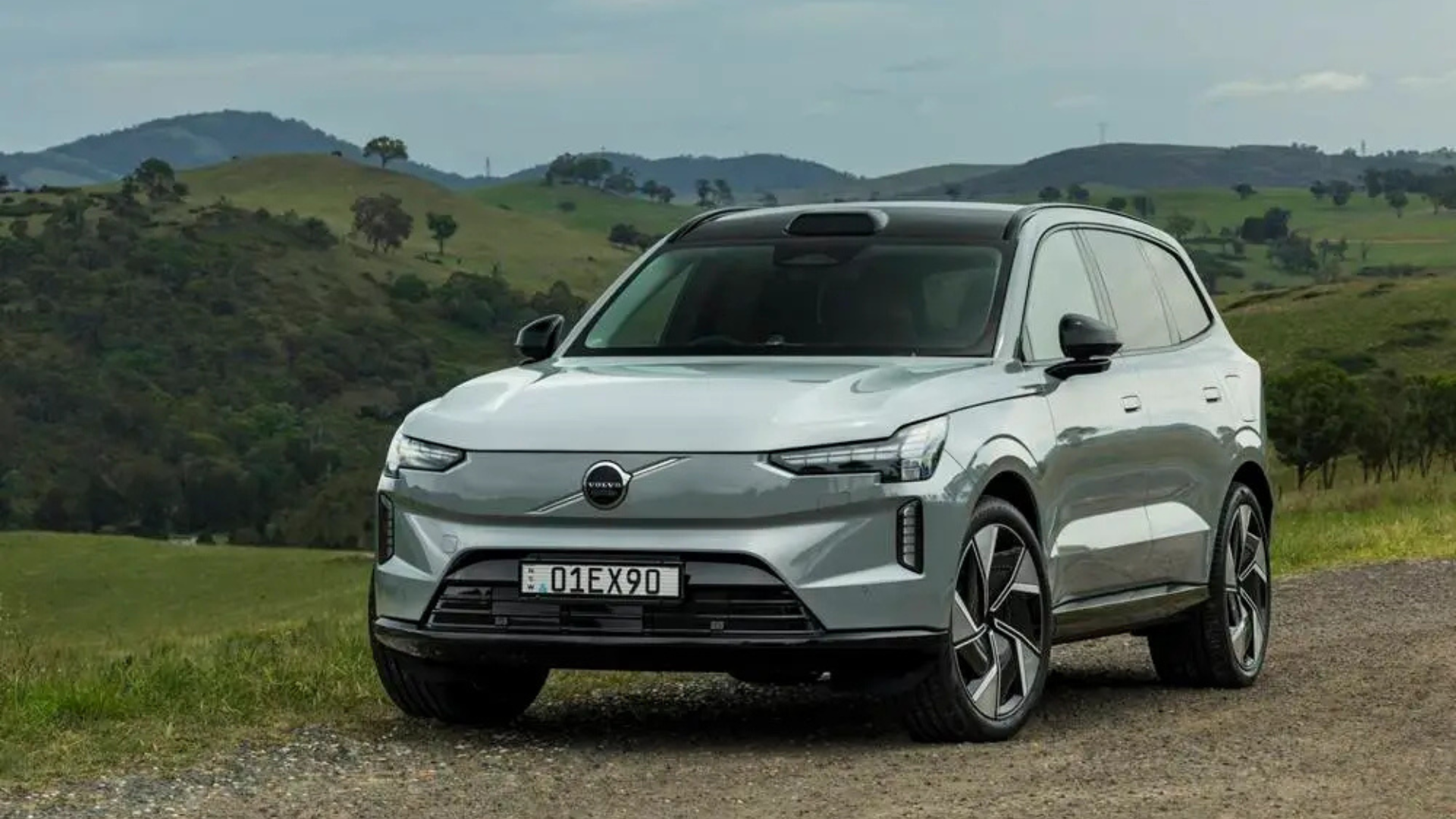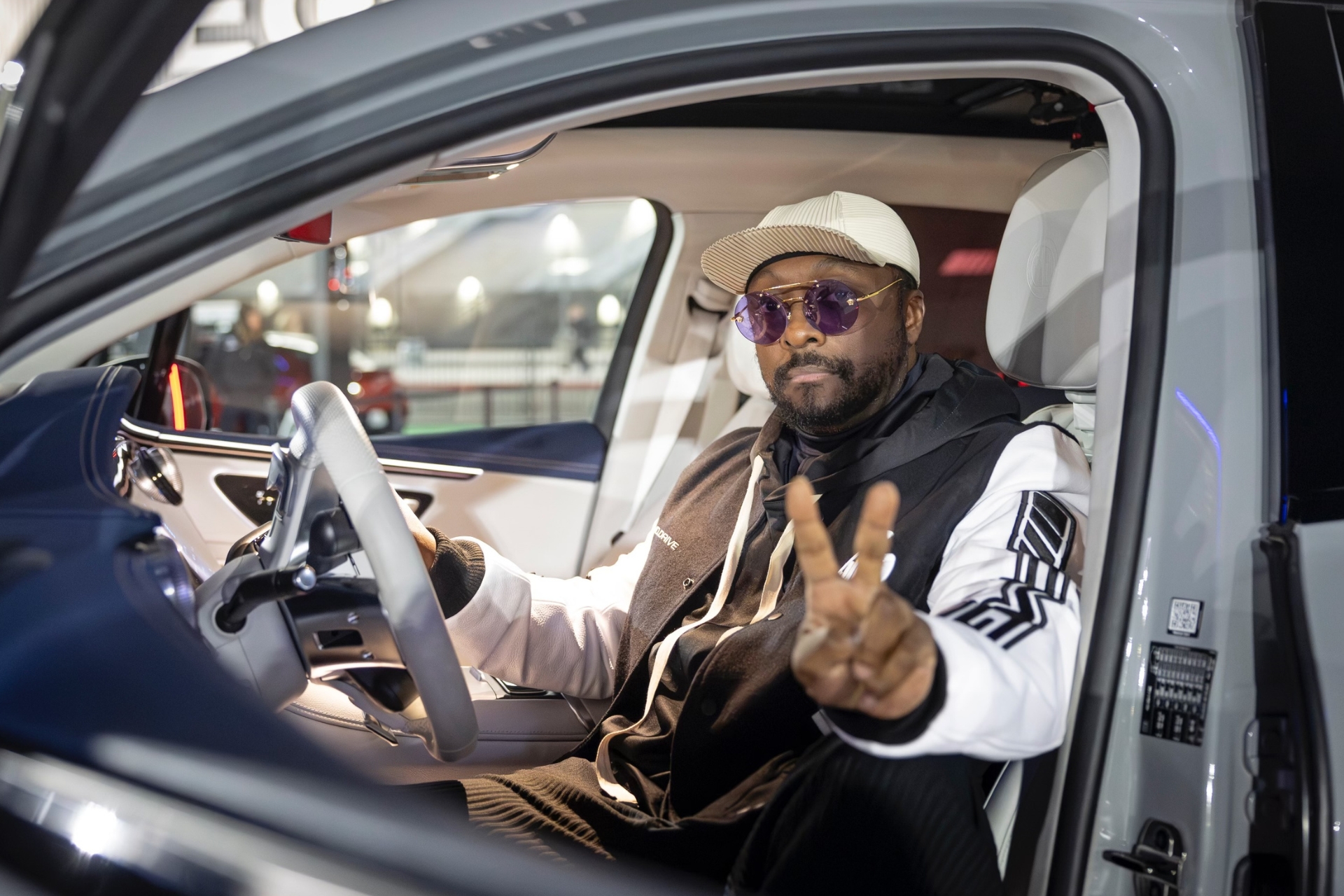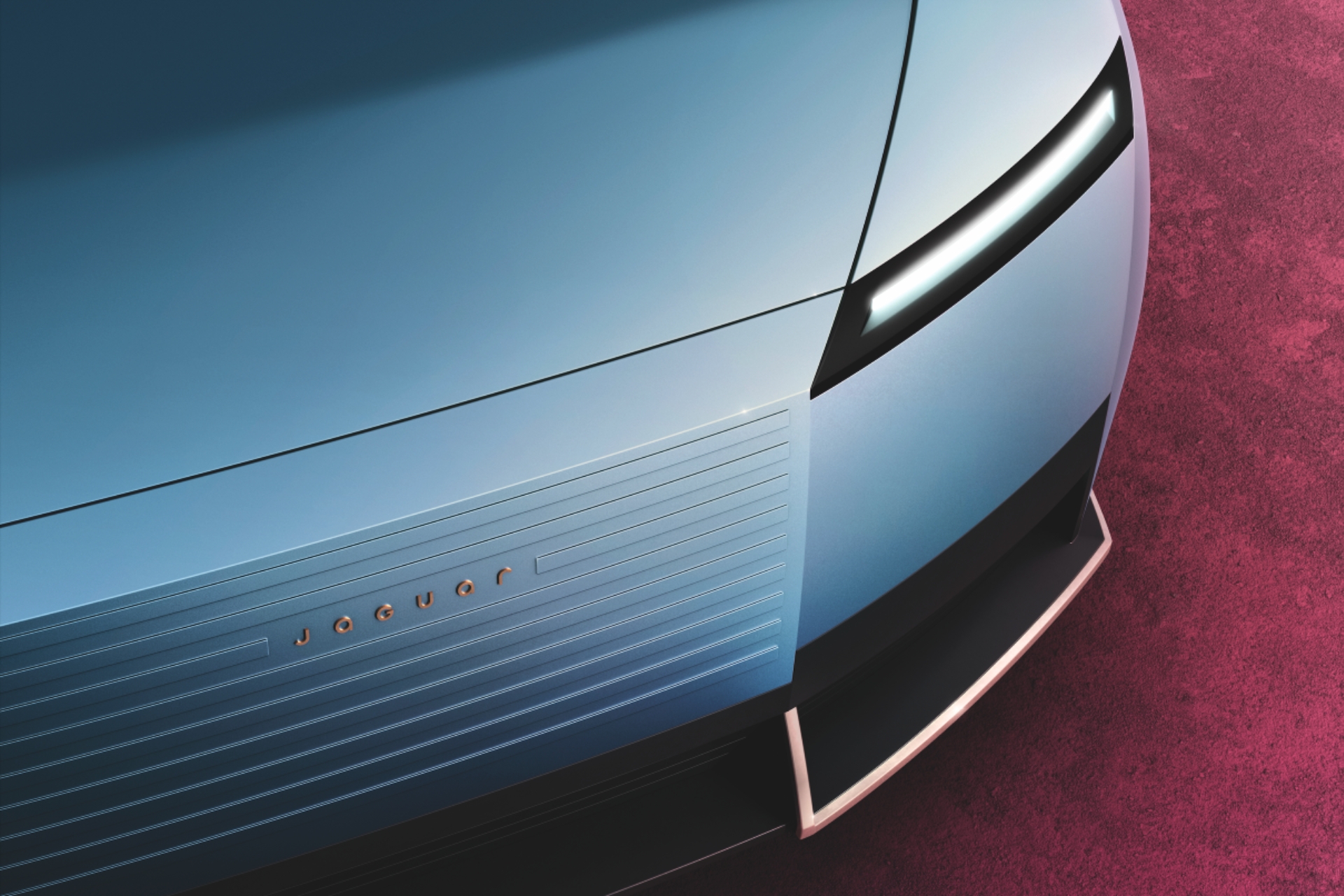AUTO SHANGHAI IS not for the weak. It will push your limits of sensory overload, tolerance for crowds and put the most passionate car enthusiast’s level of sustained interest to the test. Picture this: it’s midday on a Wednesday, in April, in Shanghai, China. I’m inside the enormous two-storey, four-leaf clover-shaped National Exhibition and Convention Center, in what I imagine being thrust, Tron-style, into an IRL TikTok feed would feel like.
On one side, a slowly rotating platform with a waterfalllike feature rains down over a futuristic pearly sedan. Conversely, a giant capybara mascot bounces joyfully before a capybara-themed EV hatchback, complete with matching plushies stuck to the doors, mirrors, steering wheel and rear windscreen wiper. It is one of two capybara-themed cars I’ve seen so far. The other is covered in fluffy brown fur and has ears, not unlike the Mutt Cutts car from Dumb and Dumber. Not so far away, past some enormous and futuristic helicopter-like EVTOLs (Electric Vertical Take-Off and Landing) concepts, Boston Dynamic-esque dog robots dressed as lion dancers sit in the uncanny valley of robotic cute-meets-terrifying and perform a traditional dance routine. I am suspicious of their intent to woo me and find myself asking if this is a form of ‘copaganda’ (probably). The lion bots are neighbours to a troupe of all-male dancers in black suits and white gloves performing a Bob Fosse-meets-K-pop-like routine in front of a small boxy car, that’s meant to evoke what, exactly, I’m not sure. The dancers move sharply and gaze ahead with no emotion, offering the audience – including myself and seven live streamers who are talking non-stop into their tripods – absolutely zero hints of context. Nobody applauds. I feel like I’m stuck in a dream.
Now in its 21st iteration and held every two years, Auto Shanghai is the biggest, most innovative and most fascinating mobility show in the world. With over 16 exhibition halls, totalling the spatial equivalent of three MCGs, it spans five days and showcases more than 1360 vehicles, over 100 brands and welcomes an estimated 1.3 million visitors and 1000 exhibitors through its doors. There is nothing else like it, a reflection of the enormous influence, economic power and innovation China is flexing across the car industry. The show’s size, frenetic energy, futuristic visions and near-infinite information dumps collide head-on with language barriers and culture shocks to create a bewildering, overstimulating, but incredible experience. Though, to be very fair, it’s A LOT.
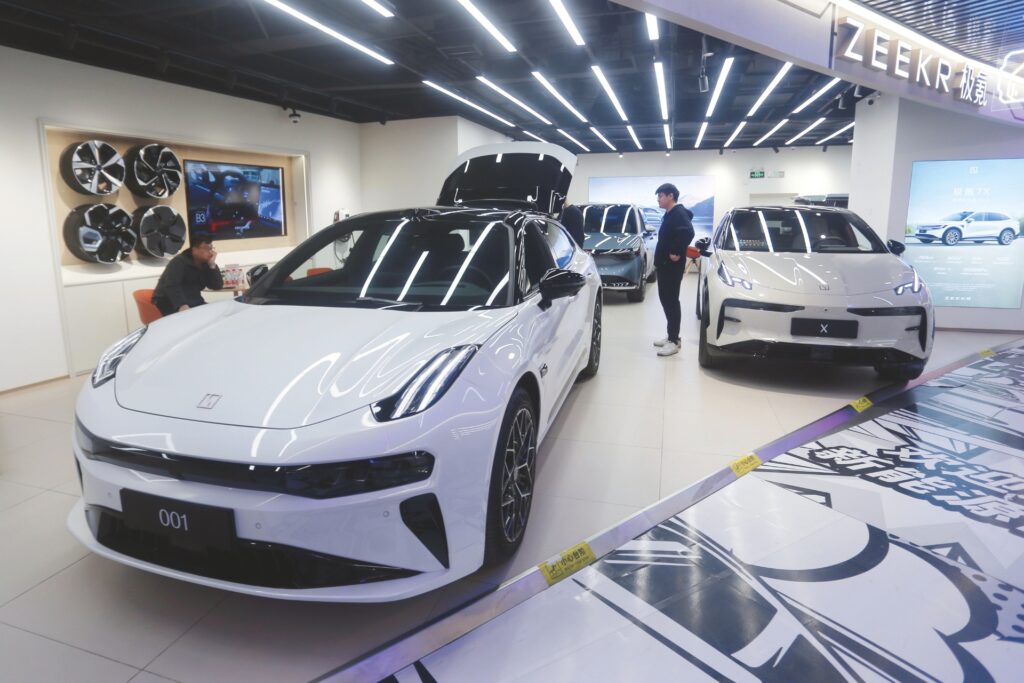
Moving at speed
China is now the biggest and fastest-moving car market in the world. Last year, it produced more than 31 million vehicles, six million of which it exported around the world, including 4.6 million petrol/diesel fuel vehicles and 1.3 million NEVs (New Energy Vehicles). As the top global producer of electric passenger cars, The People’s Republic took over Japan’s passenger car reign in 2024, a move driven by EV uptake, China’s expertise in batteries and supply-related technology, as well as Russian exports – a market that both Japanese and Western automakers withdrew from, in response to the war in Ukraine.
There are currently around 150 brands fighting for attention in China. This number has shrunk in recent years from at least double that, replicating the fight for survival that we once saw in the West. In the past, this consolidation might have happened over the space of 50- plus years, whereas China has seen it happen around 10 – a testament to the speed at which manufacturing, design, innovation and marketing now move. Some of this is thanks to recent innovations in robotics and software-defined automation, with manufacturers now able to operate automated, 24/7 assembly lines, completely run by robots, with maybe one or two humans holding an iPad, doing quality checks, or programmers working behind the scenes to ensure the automated software is working as expected.
The speed is so fast that where traditional/legacy automakers might see a new car be designed, developed, engineered and launched to market in four years, here, it’s expected to be achieved in two. As a side note, this, according to a designer (who asked to stay anonymous), partly explains the large amount of replica or West-inspired vehicles we often see emerging from the region – which I’ll highlight a bit later.

2025, year of the Chinese car
As you might have expected, it’s a very interesting time to visit China for business relating to its biggest volume export. I had some spicy Apple Translate-enabled conversations with taxi drivers who had strong opinions about America, Donald Trump and the tariffs, proving that wherever you go, there’ll always be a politically opinionated taxi driver ready to rant at you about their ideologies. The general consensus is that Australia, as a free-trade partner to the Chinese automotive industry, is a friend, and speaking to many of the major local manufacturers at the show, the desire to bring their cars Down Under is something they are extremely proud of and curious to discuss.
The car industry here operates in a bit of a different way to the rest of the world. At the top, so to speak, there are the Central state-owned manufacturers who are directly owned and controlled by the Central Government: FAW, Dongfeng and Changan. Then, there’s the local state-owned manufacturers, which are controlled by municipal governments, rather than the Central Government: SAIC, GAC, BAIC, JAC and Chery. SAIC (which MG sits under), for example, is owned and controlled by the municipal government of Shanghai; and Chery (the parent company of Australian newcomer Jaecoo) is controlled by the municipal government of Wuhu.
Finally, there are the privately owned companies and a few smaller start-ups. Some of these are already familiar to Australia, like major players BYD and Geely (parent company of Volvo, Polestar, Lotus, Smart, Zeekr and more), as well as GWM, Nio, Leapmotor and Xpeng, all of which are either already operating in our market or expected to be soon. The best answer to ‘How many Chinese car companies are in Australia?’ is, ‘More coming’. China now builds 80 per cent of all new electric cars sold in Australia, compared to near-zero six years ago. Fun fact: this also includes Teslas, and it’s a known industry secret that the Chinese-built models are of much better quality than the US-made ones, sometimes even impacting resale.
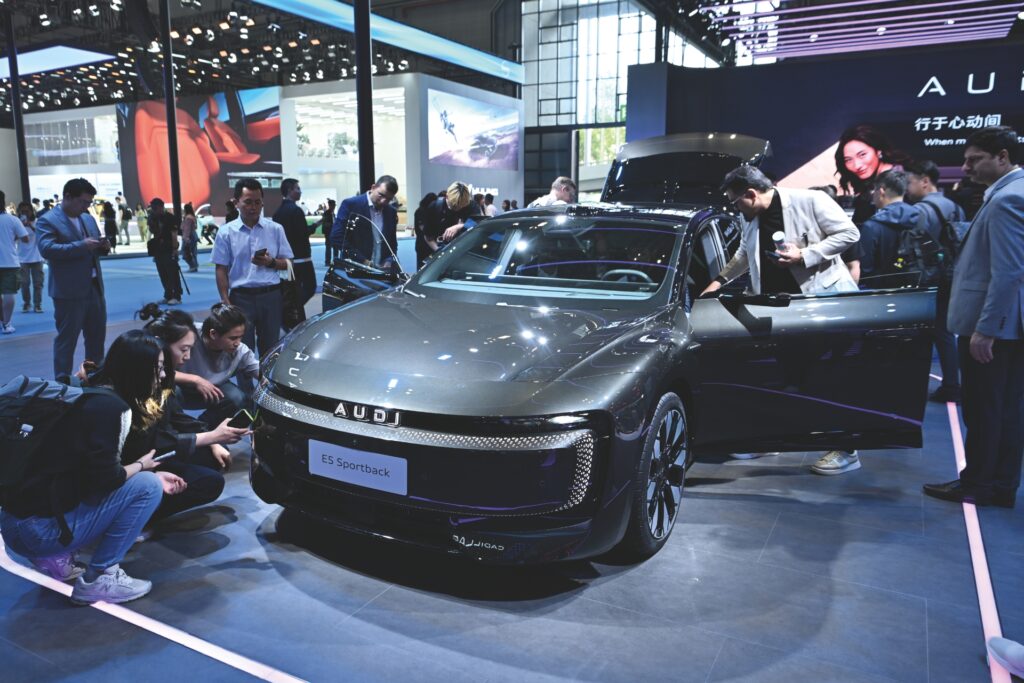
Why us? Well, Australia is an excellent testing ground for brands wanting to expand to the West. Our market is relatively small; we’ve got around 68 car brands (again, it’s ever-changing) fighting for around 1.2 million new-vehicle sales annually. Compare this to the US, which, pre-tariffs, would see 15 million deliveries a year and we’re small fry. We have similar road-safety rules, buying patterns and customer profiles to other major markets like the US, Europe and the UK, as well as diverse road conditions, and high salaries for consumer spend.
The key factor – Australia being a relatively car-centric nation with a small population – means Chinese brands can toe-dip into Western operations through us, and test various strategies. That is, should they make the investment to suit our roads. Like New Zealand, Japan, South Africa, India, the UK, most of South-East Asia and a handful of smaller nations, our steering wheels are on the right, so for something to come here, the car’s layout has to be redeveloped. Because of our market share, distance and government-regulated safety and design rules, we’re not always at the top of some of the legacy manufacturers’ delivery lists, with waits for some new cars taking years.
For consumers wanting a new car immediately, this is great news, as China’s fast pace means it’s able to deliver now, en masse and with plenty of choice. “The rapid growth and strategic consolidation of Chinese automotive brands and sub-brands is reshaping the global market – Australia included,” Carlo Zoccali, global chief commercial officer of Fully Charged Show & Everything Electric – consumer car shows held in Australia and around the globe – tells me at the show. “Companies like BYD, Geely, SAIC with MG, Chery, GWM, Zeekr, Xpeng, Leapmotor, Deepal and Changan are no longer just emerging players; they’re establishing real momentum.”
Another important factor to consider is the way new strategic partnerships are being formed. Many Chinese car companies have engaged in joint ventures with some of the traditional brands of the West, including Volkswagen Group, Jaguar Land Rover, BMW/MINI and more. “These partnerships,” Zoccali says, “show a willingness to collaborate and co-develop”, and help to leverage the speed at which traditional brands can meet the emerging market demands, all while utilising China’s increasingly sophisticated manufacturing processes. “This wave is not slowing down, with other strong Chinese brands heading to our shores,” adds Zoccali.
“The RAPID GROWTH of Chinese automotive brands . . . is RESHAPING the global market”
How adventure and luxury are emerging
The Shanghai auto show is more than just a car conference, it’s a cross- section of how China itself is evolving. Because the car – and this becomes glaringly obvious if you spend more than a few minutes on the ground here – is not just a mode of transport. It’s also a societal mirror, which reflects our ambitions, aspirations and identities across its polished surface.
There are a few key differences between the way car culture has historically evolved in Australia and China. For example, China didn’t experience the same Golden Era of the combustion engine, perpetrated and accelerated by media and Hollywood (think: Elvis, James Bond, James Dean, Mad Max, etc.); and it experienced a slower uptake of ownership culture than other regions in the world. But since Audi became the first European premium brand to enter the region in 1988, Chinese car culture and consumer perceptions have been shaped around the new and the innovative.
Aside from the non-stop overstimulation of fashion shows, dance troupes, cosplay characters, live classical music performances and more traditional Chinese theatre performances, the markers of culture are everywhere here. Some of the most popular stands belonged to Western brands: Porsche, BMW, Volvo, Mercedes- Benz, and Audi – which in China, has also rebranded itself to AUDI to launch an EV concept it co-developed with local maker SAIC.
A thriving modifying scene showcases the importance of limousines, where companies with China-exclusive modified luxury vehicles are presented to a grand hurrah. Think Mercedes-Benz people-movers covered in diamantes or fitted out with marble and gold-like surfaces and added comfort features, for example. The strongest trend, however, reflects the enormous lifestyle movement surrounding the outdoors. According to the General Administration of Sport, China’s outdoor sports industry is expected to surpass three trillion RMB (approximately AU$641.2 billion) this year, predominantly led by Gen Z and Millennials.
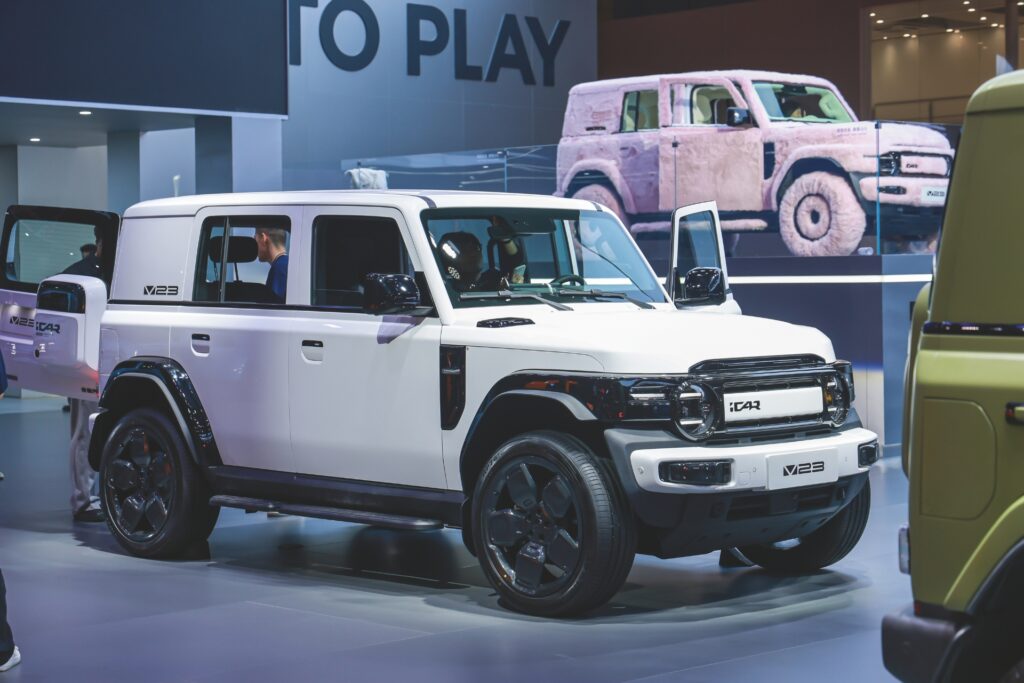
At the motor show, this was showing up in the sheer number of Defender, Ford Bronco, Mercedes-Benz G Wagen and Jeep-inspired off- road vehicles; all of which took this style of vehicle and piled in more technology on top. Rox, for example, a brand that may be destined for Australia (a spokesperson revealed it’s working on a right- hand-drive model), had a series of Defender-inspired boxy SUVs. Unlike Defender, however, Rox’s cars flexed a hot plate, cooler fridge, picnic chairs and rear passenger screens that could connect to video-game and streaming devices, including Nintendo Switch.
Then, there was iCar, coming soon to Australia as iCaur, a Chery- owned marque made up of retro-inspired Suzuki Jimny-like boxy EV SUVs. Aiming to capture the attention and lifestyle aspirations of Gen Z, the iCar stand featured a pink fur-wrapped car, flanked by performers dancing to Dua Lipa’s ‘Dance the Night’ while saying “Hi Barbie” into a mic and blazing bubble guns. As a side, pink, lavender and pastel metallics were also a very big trend here this year. The sports influence also showed up in a more native and, importantly, premium context, in the form of very cool and sleek-looking longer-bodied shooting brakes and sporty performance wagons. China buys more sedans than SUVs, so it will be fascinating to see if this influences our SUV-happy market.
Zeekr is one such marque leading the shooting brake revolution with its two athletic-looking EVs, the Zeekr 01 and Zeekr 007GT. Having already established itself within the small EV space with the Zeekr X and the luxe people-mover category with the Zeekr 009 (both already in Australia), the 007GT is part of the marque’s move into sports-luxe, with high-end interiors, considered exterior design, agile handling and stacks of tech (particularly when it comes to battery architecture and charging). I drove the new 007GT on a gymkhana track and China’s roads, and it’s a formidable machine. Zeekr has existed for only four years, and is already in more than 50 countries, including Australia, across Europe, the Middle East and Southeast Asia, and is one of the very few Chinese marques bringing high-end performance-centric vehicles to the West.
While it’s very early days, luxury performance is coming from China, and fast. At the show, Zeekr revealed its new flagship and Rolls- Royce Cullinan competitor, the stately X9, a behemoth luxury SUV that claims a rocket-like jump of 0-100km in 3.0 seconds, in its pure electric form. That is extremely quick. Other makers claiming a move into the premium space in Australia include BYD, with its brands Denza and Yangwang, and Chery’s Range Rover Evoque-like Jaecoo.
While I am hesitant to call any of these brands ‘luxury’ just yet, this next wave of higher-end models does present a new challenge for the legacy makers. Up to now, where China has gone low, led by value and affordably priced mass-market vehicles, traditional brands have strategically gone high. This makes things very interesting, as Australia and New Zealand (and Switzerland, to be fair) are the biggest markets per capita for performance- spec vehicles. We buy so many Mercedes-AMG, BMW M Performance and Audi RS models that most brands don’t even bother bringing their European base models Down Under, and our entry- level variants are considered mid-tier elsewhere in the world. We love a fast and luxe machine. But, more importantly, we don’t like waiting for them to arrive.
“The perception of the luxury customer has dramatically changed over here in China,” say Stefan Sielaff, vice president of global design at Zeekr Group. “But it has also changed in the Western world. There is less demand for, let’s say, old-fashioned bling bling stuff. Things are getting a bit cleaner and more modern. I think the typical luxury customers don’t want anything too showy, but instead, want to keep things rather calm, with more quality aspects, good materials and a very high level of things that feel almost handmade or artisan.”
Sielaff, who is based at Zeekr’s Swedish design studio, knows luxury better than most. Prior to his appointment at Zeekr, he was a design director at Bentley and had a long career at Audi and Mercedes-Benz before that. “A luxury brand normally needs heritage, and heritage needs time, which we obviously don’t have,” he says. “We only have a heritage of four years, and we didn’t start with luxury products, but more premium. But now things are happening very fast in China.” He adds: “I think heritage is a big advantage, but it can also be a burden, and vice versa”.
Being a new player, however, does have its advantages: you can act fast, be responsive and learn from others’ mistakes, without being tethered to the past. See, also, how new luxury brands have emerged in fashion and design in recent years. “I believe the luxury community is moving forward very fast,” says Sielaff. “They are not sticking with those old values anymore.” Ultimately, adds Sielaff, many of these new high-end marques, Zeekr included, are still learning and manoeuvring to meet the new global luxury consumer, at an unprecedented pace.
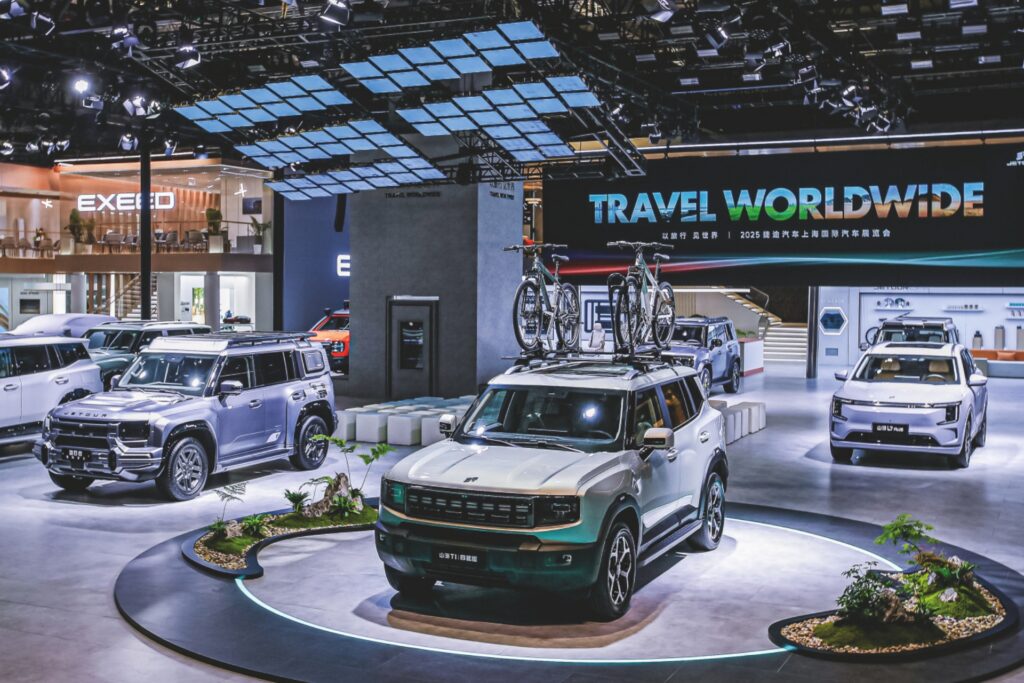
East meets West tech: the winning strategy?
With so many brands in the ring, Australia may soon find itself at the centre of a Lord of the Flies-like battle of the brands, begging the question of which marques will last. While the consolidation of brands and the scale of operations show that the majors mean serious business, there is a question surrounding what happens should some get swallowed up. This is a scenario most recently made real in the US and UK after American luxury EV startup Fisker went bankrupt. The cars’ values plummeted, and with no support, customers were left with no way to digitally service their cars, no software updates and few resale options. The Fisker drama is an evolving story, but it is a realistic worry.
The secondary fear, and the elephant in the expo’s halls, surrounds the data and user security of some vehicle systems. While it’s often hard to weed through the xenophobia, national interests and general fear of change, in a software-defined vehicle and a future rooted in the ‘Internet of Things’, it’s a serious concern and one that has been vocalised by many global cybersecurity leaders.
There is, however, at least one potential outcome that addresses both these fears, in the form of global collaboration, or an East-meets- West strategic operation. As we’ve seen happen with design and brand studios that are based in different markets – a common practice across the industry already – having cross-global operations leverages the experience of the West with the manufacturing speed of China.
When this collaborative approach is applied to technology, it makes things very interesting. Where China is leading the world in battery technology, charging infrastructure, efficient and high-quality manufacturing and innovation at speed, some companies, like Geely, are leaning on their European teams for their product and customer knowledge, big-picture use cases and data privacy expertise. This could be the key to global success, future development and longevity, argues Giovanni Lanfranchi, Zeekr Group vice president and CEO at Zeekr Technology Europe (part of Geely Group).
“It’s not just about the car, but the ecosystem around the car that really matters,” says the executive, who spent 15 years at IBM in various senior roles, including vice president across global technology services. Lanfranchi explains that Europe is still the leader in data privacy and management, thanks to Europe’s General Data Protection Regulation (GDPR) rules and wider automotive-focused integration. “We don’t think of [GDPR] as a pain, but an opportunity to really provide trust and privacy,” he says. “It’s very important, this data feedback loop, but it should be done preserving customer consent and customer anonymisation.” The software doesn’t need to know everything about you, but it does need to understand patterns in order to elevate the driving experience.
Survival, predicts Lanfranchi, will come down to real-world offerings. “As with any industry, there will be some consolidation and an element of survival. And I really think there will be three key elements that will differentiate those who stay,” he says. “One is a focus on technology that matters because there is also a lot of hype around technology for technology’s sake. This will evaporate. Number two, it’s with the West, rather than fighting, instead finding the best way to complement [China’s innovation]. Which, to be candid, is not always easy, but I think it’s starting to work. Number three is about putting the customer at the centre of everything. This will dictate survival.”
“It’s not just ABOUT THE CAR. but THE ECOSYSTEM around the car that REALLY MATTERS”
Customer-centric development, in the way that Lanfranchi means, is a very new concept to the automotive industry, borrowed directly from the software world, particularly around programs rooted in open source. It’s not market research, but transparent feedback and community voting. Zeekr already invites customers to ‘co-create’, and actively (and openly) vote on and suggest new tech features for future updates via an app. For example, where Chinese customers might be okay with lots of warning beeps and noises in their cars, Europeans hate it, and so a feature to quieten the sounds was introduced.
“It’s basically opening up our development to the customer,” says Lanfranchi, noting that this makes for a steep learning curve for both the company and the customer, as everything is so new.
The future is AI – but context is key
The future of the car, as predicted by the Shanghai auto show, looks very good. It’s still fun, dynamic and creative in terms of design, materials, colours and details, and, judging by the amount of EVTOLs, flying cars are still on the cards. But I couldn’t swing a capybara plushie without hitting something that referenced AI.
“Everyone now believes that voice will be the number one interaction channel,” says Lanfranchi, adding that China’s disruptive, open-source giant, Deep Seek, has an enormous advantage here.
“AI has been conceived as a digital assistant – you ask it, ‘Okay, write me a resume’, or whatever, and it does that. Fine. But if I’m using AI in a car, the context has to be the car, otherwise, I just have a phone.” In an automotive context, AI is integrated with the car’s sensors, its location, the environment and draws from everything it knows about you, the user.
Let’s say it’s lunchtime and you have a meeting in an hour. You mention to the car you haven’t eaten. The car’s AI has already learned what food you enjoy at this time of the day. In this scenario, it might scan your location data to suggest somewhere to eat based on your likes, how much time you have and the traffic or parking scenarios (maybe it knows you hate parallel parking, too?). Perhaps your car has been integrated with an e-wallet and can order and pay ahead. This is all feasible but again, privacy and data management are imperative.
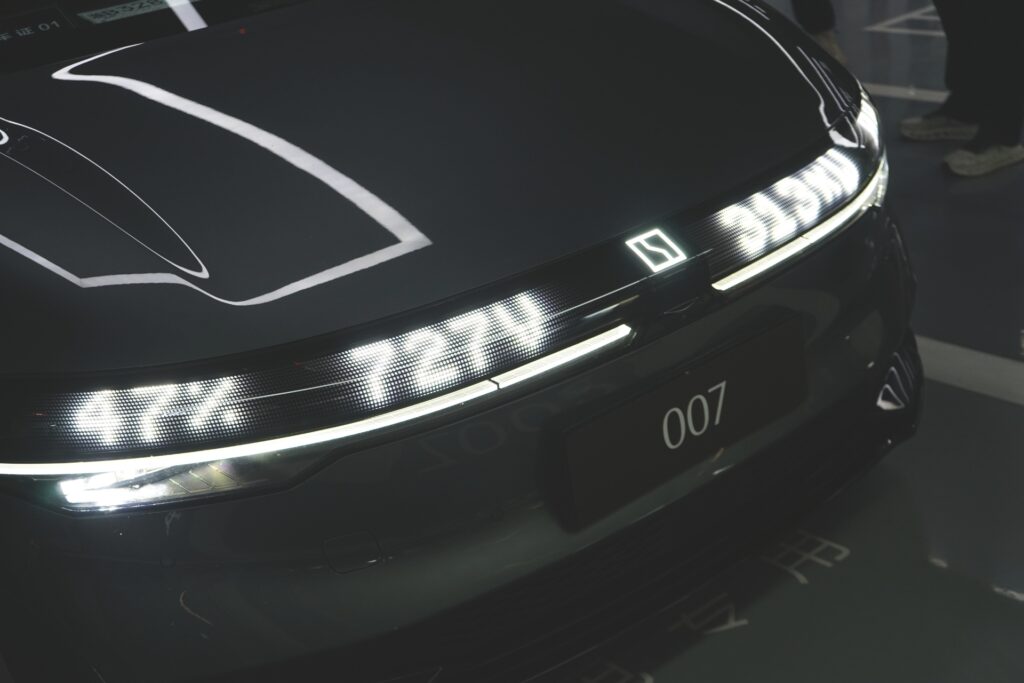
Should this level of AI integration become a reality, Lanfranchi says, it offers a level of contextualisation, personalisation and integration beyond what the AI assistants in our phones offer, because in a car, the context changes. “What we are seeing now, even with Deep Seek, it’s just the very tip of the iceberg,” he says. “I think this will have much more profound implications.”
On my final days in Shanghai, I return to the motor show again for another look. This time, it’s a weekend and somehow even crazier. I escape being crushed at the Porsche stand, accidentally get caught in the middle of a live-streamer circles and score a high- five from a Lexus bear mascot. I struggle with a face-recognition-enabled vending machine for my umpteenth can of Chinese Red Bull and I find myself thinking about Lanfranchi’s AI predictions. What would an AI-enabled vehicle look like right now? If I told it I needed a drink, would it bring me here for another Red Bull or suggest the water my dehydrated self probably needed more? Would my car factor in my habitual dissociation time when I get home? Just like I’m doing right now? Would it lessen my desire to flex free will on a drive?
At this point, something a little bit funny happens – I notice that next to the drinks machine is another one selling Labubus, the most popular collectible in China right now and an item that has been haunting my social media algorithms for months, no matter how many times I say, ‘Not interested’. I have no idea why Labubus are being sold at the motor show, but the scenario of algorithmic to IRL synchronicity adds to the comedic experience of it all.
If I’ve learned anything here about the show, the industry, its scale and its ambition, the answer to anyone who dares to ask, ‘Why?’, seems to be a fantastic and resounding, ‘Why not?’
I take a breath, unfold my enormous map to figure out where to head next, disassociate for 10 minutes, and then head into the next hall, readying myself for whatever chaos and futuristic brain-bending tech awaits me just around the corner.
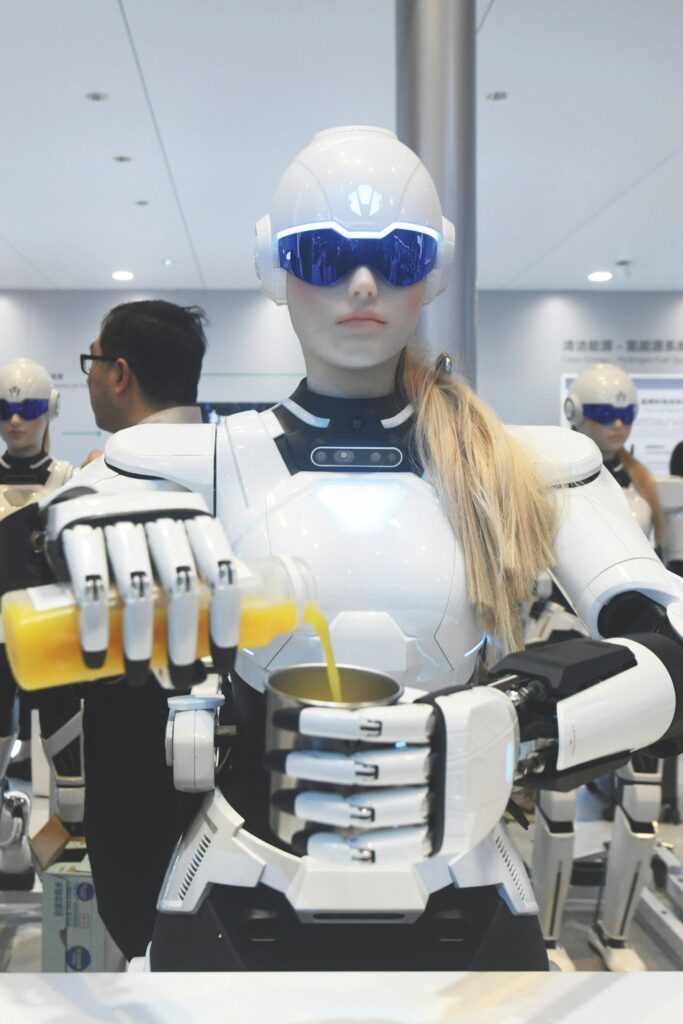
Photography: courtesy of Jetour, Zeekr and Getty Images.
More from the Winter 2025 issue:









